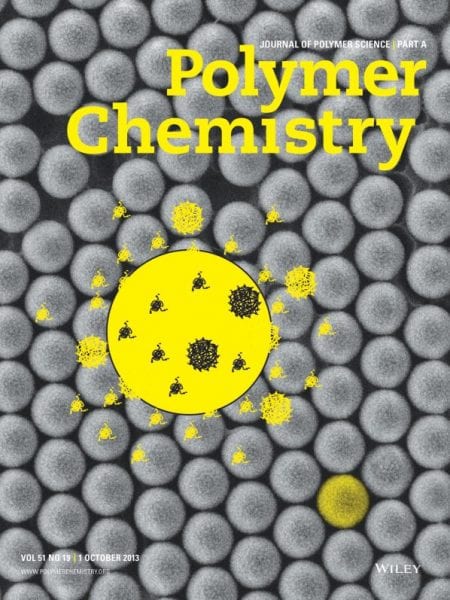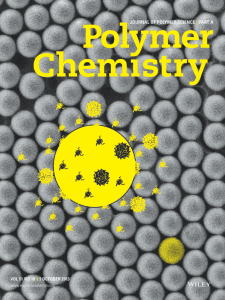In Volume 51, Issue 19 of the Journal of Polymer Science Part A: Polymer Chemistry, the editors are spotlighting three articles: “Side-by-Side Comparison of Dendritic-Linear Hybrids and Their Hyperbranched Analogs as Micellar Carriers of Chemotherapeutics,” “Synthesis and Characterization of Fused-Thiophene Containing Nahthalene Diimide n-Type Copolymers for Organic Thin Film Transistor and All-Polymer Solar Cell Applications,” and “Narrowly Distributed Homotelechelic Polymers in 30 Minutes: Using Fast In Situ Pre-functionalized ROMP Initiators.”
2,2 bis(hydroxymethyl)priopionic acid (bis-MPA) based dendritic scaffolds show promise for biomedical applications due to their biocompatibility and nonimmunogenicity. Dendritic-linear bis-MPA scaffolds have the properties of both the dendritic and linear polymers, with a freedom of configuration. Michael Malkoch and colleagues synthesized hyperbranched dendritc-linear bis-MPA hybrids using a more scalable and time-saving method of production. The final structure was found to be nontoxic and could be used for large-scale biomedical applications.
Naphthalene diimides (NDIs) are good candidates for n-type materials in organic field effect transistors (OFETs) and organic photovoltaics (OPVs) due to their high electron affinities and mobilities, and chemical and thermal stability. Christine K. Luscombe and collaborators characterize polymeric semiconductors with NDI and fused-thiophene monomers. Researchers were interested in determining whether an extension of the fused-thiophene system will lead to optimal device performance and they found that increasing the number of fused-thiophene moieties enabled tuning of the electronic structure and improved charge mobilities in OFETs.
Ruthenium(II)-complex initiated ring opening polymerization reactions lead to a non0functional styrenyl residue at the focal unit. In syntheses where functional polymer end groups are vital, such as telechelic polymers, there are few strategies that can be employed. Andreas F.M. Kilbinger and Nils Hanik describe a one-pot synthesis for narrow polydispersity homotelechelic ring opening metathesis polymerization. This method is one of the fastest and most versatile end-functionalization for ring opening metathesis polymerization to date.


















